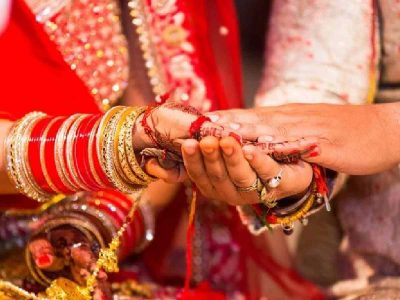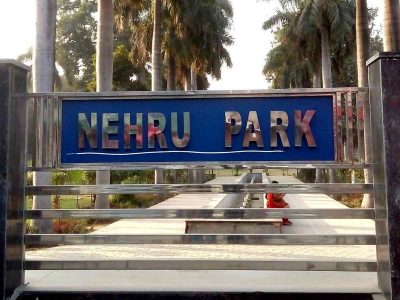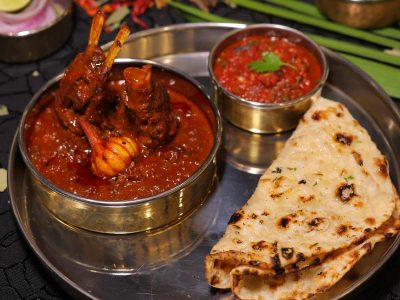Cricket: The Indian cricket setup has long been influenced by regional considerations, and so has the national selection committee. Traditionally, the selection panel has been divided based on five cricketing zones, with a sixth, the north-east zone, added in 2017 18 following a Supreme Court order. Given this structure, it is highly unusual for a selector from one zone to strongly advocate for a player from another.
Former Delhi and north zone captain Akash Lal, who was a senior national selector for two years (1989-90 and 1990-91), defied these norms. He was a staunch supporter of left-handed batsman Vinod Kambli from the west zone, advocating for his inclusion in the Indian team despite regional biases that often influenced selections.
A battle in the selection room
Recounting a pivotal moment, the 84-year-old Lal recalled a selection committee meeting for the Indian team ahead of a tournament in Sharjah in 1990-91. The committee was chaired by former Indian Test wicketkeeper Naren Tamhane (west) and included Anand Shukla (central), Rusi Jeejeebhoy (east), Gundappa Viswanath (south), and Lal (north).
Also read: Delhi’s decade of decline in cricket: Just four titles in 10 years
While acknowledging the presence of politics in selections, the former selector told Patriot, “Everyone has always talked about regionalism in selection. Yes, to some extent it existed. I came across a great extent of politics, but it is not true to the extent it is made out to be. I will give you an example.”
He explained why he backed Kambli: “When Kambli and Sachin Tendulkar were coming up, with my limited knowledge of cricket, I considered Kambli to be a better player at that age. Kambli was a better shot-maker. Then, unfortunately, he went astray due to personal issues. Of course, anyone dealing with domestic problems cannot be as alert in sports.”
Lal’s fondness for Kambli turned into a confrontation when Tamhane, from Kambli’s own zone, opposed his selection with a dismissive remark. “I was battling for Kambli, and Tamhane said, ‘Akash, why are you supporting a man from the chawls?’ Can you imagine this?” Lal revealed in an interview.
This remark outraged Lal, who insisted that the meeting would not proceed unless an apology was made. “I said I wanted it recorded — ‘what is all this?’ I did not let the meeting proceed for the next half hour. I asked whether we were selecting a team based on cricketing ability or where the person lived. ‘Tomorrow you will select a person living in a palace,’” he recalled saying in that tense meeting.
Ultimately, Kambli was selected alongside Tendulkar. However, Lal noted that Tamhane was later instrumental in Kambli’s removal from the team. “Selection is a thankless job. You cannot satisfy everybody,” he admitted.
Concern for ailing Kambl
Decades later, when the 53-year old Kambli was hospitalised in Maharashtra, Lal—despite being unwell himself—was deeply concerned.
“Kambli was one of my favourites. I called up the hospital [Akruti Multispecialty Hospital in Kalher, Maharashtra] after he was admitted and was told he had multiple tumours,” Lal revealed.
So distressed was he that he even contacted a top doctor at AIIMS in New Delhi to explore the possibility of Kambli being transferred there for advanced treatment. “I asked if they would consider shifting him to AIIMS. They said if required, they would let me know. The medical director at AIIMS assured me they would help if needed,” he said.
What did Lal like in Kambli’s game? “I liked his choice of strokeplay and that his head was always down while playing shots, not up. He was always looking for the ball to be punished, particularly off his pads towards mid-on and mid-wicket. And anything pitched short was sent searing past point or cover. He was a very graceful strokeplayer,” he explained.
Lal let another secret out. “While I was the national selector, I asked Kambli to come and play for Delhi. He gave a lovely reply. He thanked me for the offer and said that he would like to stay in Mumbai as he had to look after his family,” he disclosed.
A family steeped in cricket
Cricket runs deep in Lal’s family. His father, Dhir Muni Lal, a diplomat, and his uncle, Dhir Jagdish Lal, were both first-class cricketers, active in the sport from 1934 to 1949 and 1938 to 1959, respectively.
His nephew, Arun Lal, followed suit, making a mark in both domestic and international cricket. For 62 consecutive years, at least one member of the family played first-class cricket.
Akash Lal himself was a prolific right-handed opening batsman, representing Patiala, Delhi, and Punjab from 1957-58 to 1975-76. His most consistent phase came in the early 1960s, with standout seasons in 1963-64 (672 runs at 48.00) and 1964-65 (631 runs at 57.36). His career-best knock of 209 not out came against Jammu and Kashmir in 1964. Despite his impressive domestic performances, he never earned a Test cap.
The Arun Lal dilemma
Of the four family members who played first-class cricket, only Arun went on to represent India. Between 1982-83 and 1988-89, he played 16 Tests, scoring 729 runs, and also featured in 13 One-day Internationals.
Interestingly, Arun’s two best domestic seasons coincided with his uncle’s tenure as a national selector. This could have led to awkward moments in selection meetings, even though Arun had moved to Bengal (east zone) from Delhi in 1981-82, while his uncle represented the north zone.
After a poor tour of the West Indies in 1988-89, Arun bounced back spectacularly in domestic cricket. He amassed 828 runs at 118.28 in 1989-90 and followed it up with 798 runs at 88.66 in 1990 91. These performances brought him back into contention for the Indian team.
However, despite his prolific domestic form, Arun was controversially left out of the squad for India’s one-off Test against Sri Lanka in Chandigarh in late 1990. “Arun Lal was perhaps one of the most prolific scorers in Indian cricket, maybe after Vijay Hazare and Rusi Modi. He was in contention for an Indian spot, and somehow I was not able to carry my opinion through in the selection committee meetings,” admitted Lal.
According to him, three selectors opposed Arun’s inclusion, favouring left-arm spinner Venkatapathy Raju instead. “Only Ramesh Saxena (east zone) supported me. These things do happen,” he said.
Curiously, Ravi Shastri, who was primarily picked as a left-arm spinner who could bat, did not bowl in that match, while Raju claimed eight wickets in the match. Had Shastri batted lower down, Arun could have opened alongside Manoj Prabhakar, said Lal. India won the match by an innings and eight runs, but for Arun Lal, it was a missed opportunity—one that ended his international career.
Also read: Delhi’s Ranji Trophy flop show comes to an end
A legacy of conviction
From his defiance in the selection committee to his deep concern for his former protégés, Akash Lal’s career has been marked by his conviction. He fought for merit over regionalism, even when it meant challenging the norms of the cricketing establishment. Whether it was backing a young Kambli, standing by his nephew’s credentials, or extending a helping hand to an ailing former player, Lal’s commitment to the game remains unwavering. His legacy is not just one of personal cricketing excellence but also of standing up for fairness in Indian cricket.
The writer is a senior journalist based in Delhi and has covered sports for over three decades





